From Nov 5th to Nov 13th, the 14th Meeting of the Contracting Parties to the Ramsar Convention on Wetlands (COP14) was held concurrently in WuHan, China and Geneva, Switzerland.
On the country road at the junction of East Lake Luoyan Scenic Area and Moshan Scenic Area, an artistic and unique pavilion stands peacefully among a grove of metasequoia trees. With the “Large swan on wetland enjoying surrounding sceneries, welcoming worldwide visitors” theme, the pavilion abstractly delivers a picturesque sight of “wild goose lingering among rosy clouds” with its Hyperboloid roofs.
This is the achievement pavilion commemorating the 30th anniversary of China's implementation of the Ramsar Convention on Wetlands. This pavilion was designed by famous architect Li Baofeng, a professor from the School of Architecture and Urban Planning of HUST.
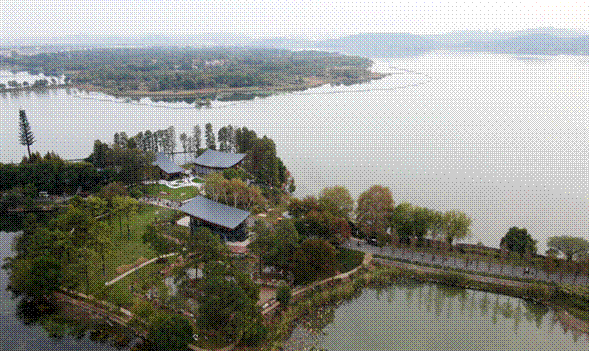
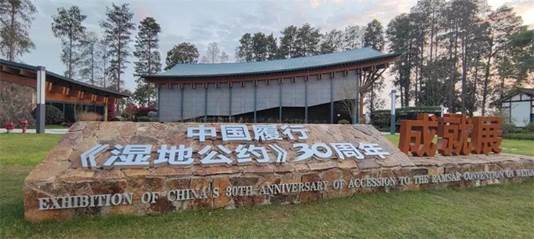
Aerial view of the pavilion (provided by Wuhan Municipal Landscape Gardens and Forestry Bureau)
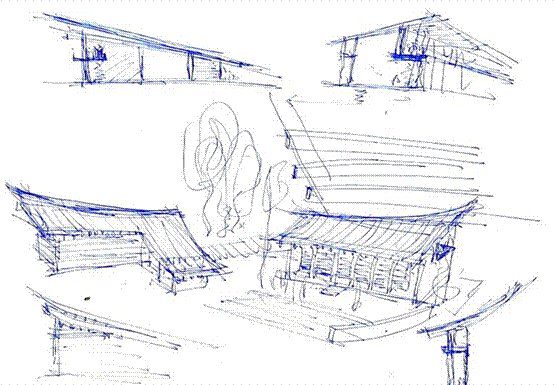
Designing scheme of the pavilion (provided by the architecture studio of Prof.Li Baofeng)
“Using the wings of waterfowls and the Chinese traditional wooden structure as references,” Said Prof. Li, “we designed a mono-pitched roof with deep eaves and set a mezzanine area in the high-side space to form an observation deck. To demonstrate the expressive quality of Chinese traditional architecture, we deliberately expose all the wooden structures.” After the construction was completed, different interpretations of the pavilion sprung up--the dynamic power of fowls unfurling, the similar beauty of a Hubei chime, the metaphor of a piano keyboard, the characteristic of Chu culture and even the vigor of the legendary bird with nine heads. The diverse interpretations of this pavilion attach more connotations to it.
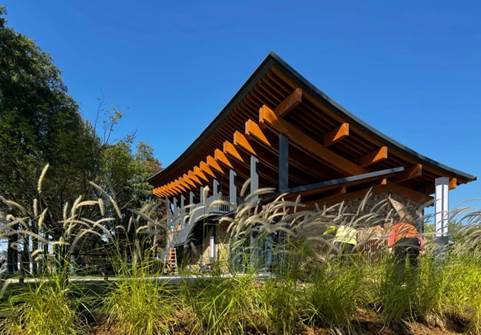
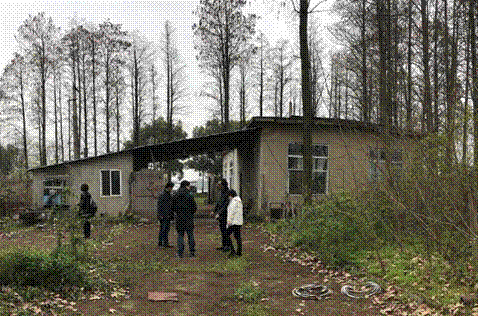
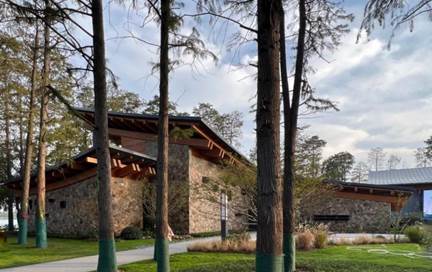
Photos of the pavilion (provided by the architecture studio of Prof.Li Baofeng)
Divided into three exhibition halls, the pavilion was transformed from an abandoned water plant with a gross area of 860m2. Despite being abandoned, the water plant is still hiding in the deep courtyard and watching the Luoyan Scenic Area with the fir forest. To preserve the fir forest and water plant, the pavilion retained the original layout and the most distinctive features of the water plant including the equipment and filter tank, renovating them with new materials and structures. In terms of landscape design, pond cypresses were fully preserved and became the most ecological landscape via a range of green measures.
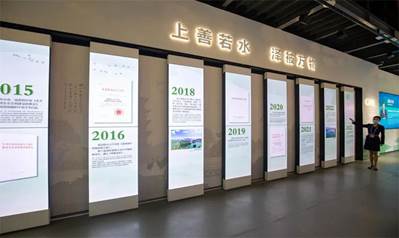
Exhibition hall I, trace back the 30 years’ implementation of the Ramsar Convention on Wetlands (shot by Fu Chao)
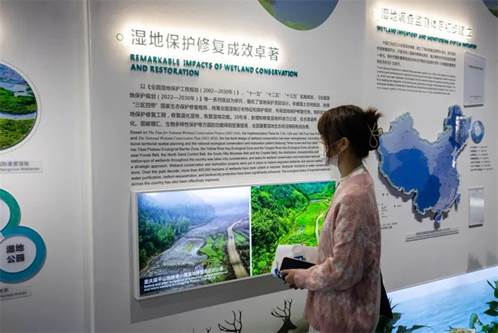
In exhibition hall I, visitors can learn about the significant accomplishments that China has made during the 30-year implementation of the Ramsar Convention on Wetlands in terms of legislation, monitoring, publicity, and international cooperation.
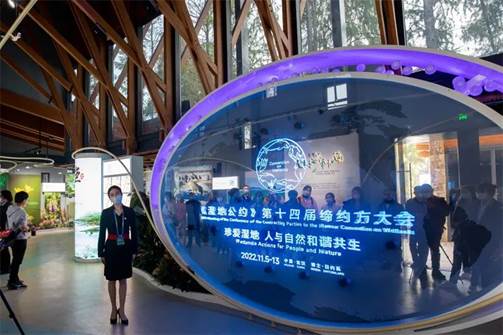
3D display screen in exhibition hall II (shot by Fu Chao)
Titled “perceive the wetland”, exhibition hall II provides visitors with a better perception of wetlands and how close they relate to our daily life through the six senses.
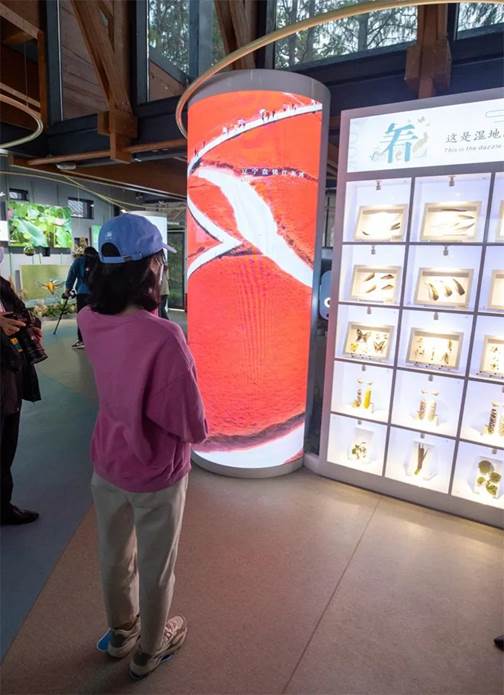
Color Perceiving Area in exhibition hall I (shot by Fu Chao)
In this hall, visitors can lean their ears to various birds’ singing and bend themselves to peaceful plants’ aroma. Ecological specimen boxes are also displayed in this hall. Smart cameras at the Color Perceiving Area can instantly identify the colors of visitors’ clothes and display the wetland sceneries with the same color tones on an LED screen. These innovative and interesting interactions have amazed all visitors.
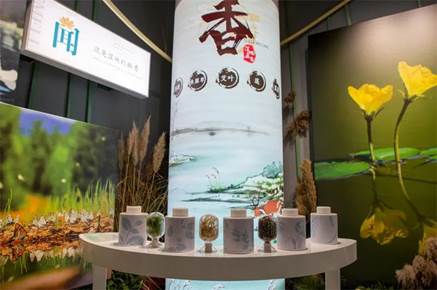
Samples of plants with delicate fragrances in exhibition hall II (photo by Fu Chao)
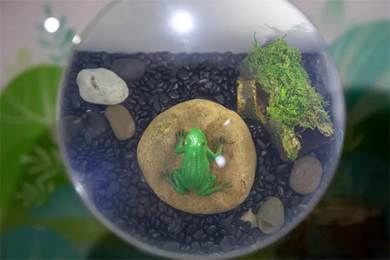
Ecological specimen boxes displayed in exhibition hall I (shot by Fu Chao)
“Current efforts matter most for wetlands conservation to have long-term benefits.” Prof. Zhang Mingxiang, associate dean of Beijing Forestry University, said after visiting the Achievement Pavilion, “In the long run, we need to consider wetlands conservation as a persistent pursuit.” Wetland is a carrier of biodiversity and is closely related to the improvement of people’s life and living conditions. Every effort counts in wetlands conservation. For the general public, we need to start by protecting our surroundings.

12 wetland water samples of international importance in exhibition hall I (shot by Fu Chao)
It is reported that the achievement pavilion will be opened to the public for free as a major outcome of COP14 and serve as a resource for citizens to learn more about wetlands and become involved in conservation.
Written by: Yang Kunjie
Edited by: Meng Ziyun, Jiang Jing
